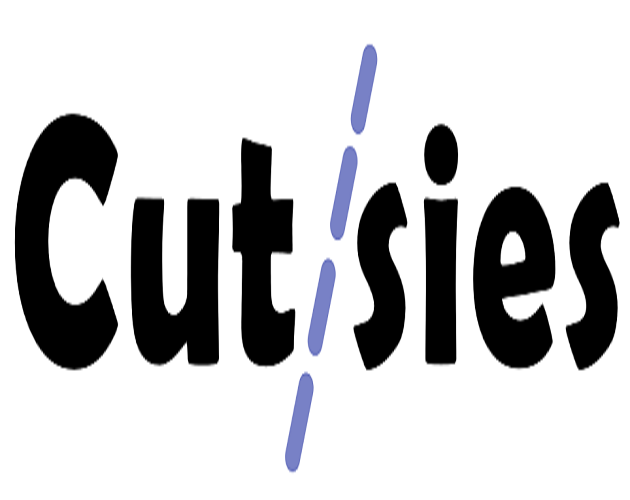Right click
Mac OS X & macOS names. As you can see from the list above, with the exception of the first OS X beta, all versions of the Mac operating system from 2001 to 2012 were all named after big cats. See what Tracey Glossop (traceyglossop) found on Pinterest, the home of the world's best ideas. The rebuild of Cuties. Contribute to Kreogist/Cuties-Blocks development by creating an account on GitHub.
Click the right corner of your Apple mouse, or click with two fingers on your Apple trackpad. You can change this in Mouse preferences and Trackpad preferences.
Scroll, swipe, click
Settings for scroll direction, swipe gestures, and button assignments are also in Mouse and Trackpad preferences.
Close & resize windows
Buttons for closing, minimizing, and maximizing a window are in the upper-left corner of the window.
Change volume
Use the volume control in the menu bar, or use the volume keys on your Apple keyboard.
Change Mac settings
Looking for the Control Panel? Use System Preferences instead.
Open apps
You can also use Launchpad and the Dock to open your apps (programs).
Find files
Use Spotlight to quickly find and open apps, documents, and other files.
Browse for files
Looking for Windows File Explorer? Learn about the Finder.
Throw files away
Looking for the Recycle Bin? Use the Trash, which is in the Dock.
Rename files
Click the file once to select it, then press the Return key and type a new name. Press Return when done.
Preview files
Preview most files on your Mac using Quick Look. Click the file once to select it, then press Space bar.
Back up files
Time Machine keeps a copy of all your files, and it remembers how your system looked on any given day.
Keyboard shortcuts
Many Mac keyboard combinations use the Command (⌘) key. Learn more keys and keyboard shortcuts
Cut
Copy
Paste
Undo
Close window
Switch apps
Quit app
Cutesies Mac Os Download
Forward delete
Find files
Force quit app
Take screenshot
Learn more
- For more information to help you get to know your Mac, use the Help menu in the Finder menu bar.
- What's it called on my Mac? includes additional Windows and Mac terms.
Lesson 8: Keyboard Shortcuts in macOS
Super fast food! mac os. /en/macosbasics/understanding-user-accounts/content/
What are keyboard shortcuts?

Keyboard shortcuts are keys or a combination of keys you can press on your keyboard to perform a variety of tasks. Using keyboard shortcuts is often faster than using a mouse because you can keep both hands on the keyboard. Keyboard shortcuts are also universal, which means you can use many of the same shortcuts in a variety of applications. For example, you can use the same shortcut to copy and paste text in a word processor and in a web browser.
Using shortcuts
Many keyboard shortcuts require you to press two or more keys in a specific order. For example, to perform the shortcut Command+X, you would press and hold the Command key, press the X key, then release.
You'll use the Command, Option, and Control keys to perform most keyboard shortcuts. You'll find these keys near the bottom-left corner of your keyboard.
If you are not using a Mac keyboard, you may not have the Command or Option keys. This means you'll need to experiment with key combinations to perform some keyboard shortcuts. The fright before christmas mac os.
Working with text
These keyboard shortcuts are useful when working with text in word processors, email applications, and more. They can help you perform commonly repeated tasks, like copying and pasting text.
- Command+X: Cut the selected text.
- Command+C: Copy the selected text.
- Command+V: Paste the copied or cut text.
- Command+A: Select all of the text on the page or in the active window.
- Command+B: Bold the selected text.
- Command+I: Italicize the selected text.
- Command+U: Underline the selected text.
Working with files and applications
You can use keyboard shortcuts to open, close, and switch applications. When working with a file, such as a Microsoft Word document, shortcuts can be used to createnew files, find words, and print.
- Option+Command+Esc: Force an unresponsive or frozen program to quit. This shortcut opens the Force Quit Applications dialog box. You can then select an application and click Force Quit to quit it.
- Command+Delete: Send a selected file to the Trash.
- Enter: Open a selected application or file.
- Space: Preview the selected file.
- Command+N: Create a new file.
- Command+O: Open an existing file.
- Command+S: Save the current file.
- Command+Z: Undo the previous action. If you want to redo the action, press Command+Y (or Command+Shift+Z in some applications).
Internet shortcuts
Cutesies Mac Os X
Keyboard shortcuts can also be used to navigateyour web browser. Many of the text shortcuts above are also useful online, including the shortcuts for selecting, copying, and pasting text into your web browser's address bar. Note that some of these shortcuts may work a bit differently depending on the web browser you're using.
- Command+N: Open a new browser window.
- Command+T:Open a new browser tab.
- Command+D: Bookmark the current page.
- Command+B: View bookmarks.
- Command+J: View recently downloaded files.
Finding more keyboard shortcuts
In many applications, you'll find keyboard shortcuts next to menu items.
When you look for shortcuts this way, you'll notice that macOS uses a few different symbols to indicate different keys on your keyboard, including: Wild wafers deluxe (c64) commodore 64 mac os.
- ⌘ Command key
- ⇧ Shift key
- ⌥ Option key
- ⌃ Control key
- fn Function key
If you want to perform the shortcut ⌥ ⌘ P, press Option+Command+P on your keyboard. ⇧ ⌘ S would be Shift+Command+S, and so on.
If you want to learn even more keyboard shortcuts, check out this lesson from our Tech Savvy Tips and Tricks tutorial.
/en/macosbasics/common-applications-in-macos/content/
